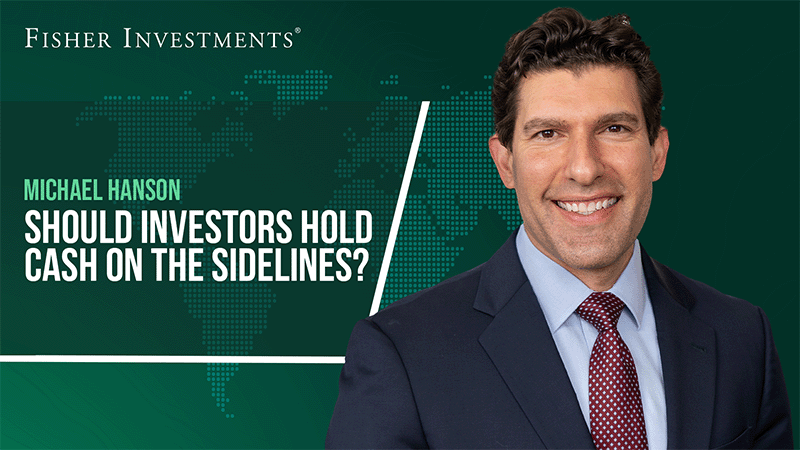Personal Wealth Management / Market Analysis
Random Musings on Markets XIII: M Is for Musings
Yet another not-weekly roundup of financial news stories for your enjoyment. Hopefully.
In this week’s edition of our not-weekly, not-every-Friday financial news roundup, you will not find images of our calendars from 30-plus years ago, dissections of inside jokes in our high school yearbooks or anything of the sort. We declare this a Kavanaugh v. #MeToo free zone, and we instead offer you a look at securitized Dire Straits royalties, the not-so-terrible September, the Fed’s deletion of one adjective and more.
Money for Nothing and a Lunch for Free?
Twenty-one years after Prudential bought all the Bowie Bonds, rock music fans have another chance to invest in a classic outfit’s back catalogue: Ed Bicknell, the former manager of Dire Straits, is selling his share of the band’s back catalogue. But this isn’t a “Michael Jackson buys the Lennon/McCartney back catalogue out from under Paul’s nose” kind of a deal. Rather, a company called Royalty Exchange is creating an investment vehicle that would allow high-net-worth investors to own a slice of Bicknell’s slice. They say it generated nearly $300,000 in royalties over the past 12 months, anticipate an 8% yield in year one, and are “forecasting a 12 – 15% annualized rate of return over 10 years.” For comparison, 10-year US Treasurys yield just over 3% presently, and the S&P 500 has averaged about 10% annualized since 1926.[i]
Now, we don’t recommend individual securities, especially private securities involving song royalties. We do, however, always feel compelled to point out that there is no such thing as a free lunch, and any investment return is compensation for risk. As a general rule, the higher the yield, the higher the risk. These royalties presently yield about twice as much as a Greek bond. Yes, the same Greece that has basically defaulted thrice since 2012.
So, perhaps we should all think about the potential risks of investing in Dire Straits’ back catalogue? Not to throw shade at the band or anything—we grew up in the 1980s, and we, too wanted our MTV. But. The juggernaut in Dire Straits’ catalogue is that 1985 magnum opus, Brothers in Arms. It had a handful of hits, but when we listen to the 80s channel on the radio, we hear U2, Bon Jovi, The Police, Paul Simon, Toto and the who’s who of yacht rock a lot more than we hear Dire Straits. Being Gen-Xers who can’t be bothered with Spotify, we don’t know what the retro kids are streaming these days, but there is heavy competition in both the 80s and classic rock genres. Will the kids pick Dire Straits over Guns N Roses? The Smiths? Zeppelin? The Clash? Bowie? Or, try this: Last year, U2 sold out a bunch of football stadiums to play The Joshua Tree in its entirety. We … we sort of doubt a reunited Dire Straits could pack that many folks in for a Brothers in Arms retrospective? And we sort of wonder if their album sales won’t fall further down the all-time leaderboard as their core fan base ages.
Anyway, for those aspiring to earn big returns on songwriting royalties, our advice is this: Maybe try the Carole King route instead.
September Was Fine for Stocks
Coming into September each year, we regularly see articles noting the fact stocks often fall in the fall. September, folks frequently caution, is the only month of the year with a negative average return (-0.61%[ii]). Many apparently think this means September is Usually Bad.
Except this is wrong? Since 1926, September has been negative less than half the time—47.8% of the time, to be precise.[iii] Barring a late-day reversal Friday, 2018’s September should prove positive, too.
You know, this is just the latest example that if you base an investment decision on the calendar, you have a process problem. It doesn’t matter what the maxim is: Sell in May and go away; the January Effect; Santa Claus rallies; September is the weakest month. They all suffer from the same flaw: They aren’t actually any kind of market analysis. They are trivia about past returns, which fluctuate for many, many, many reasons. However, one of those reasons is not, “this month is good/bad/awful/the season of crashes.” Markets move most on the gap between reality and expectations—surprises. The fact September follows August is probably a surprise to very few. (We think?)
Accommodate This!
When the Fed hiked short-term interest rates on Wednesday, the FOMC didn’t just raise the fed-funds target range to 2 – 2.25%. They also removed the following sentence from their statement: “The stance of monetary policy remains accommodative, thereby supporting strong labor market conditions and a sustained return to 2 percent inflation.”
Predictably, Fed-watchers jumped all over this, trying to parse whether removing “accommodative” meant the Fed was done raising rates or poised to keep hiking. Fed head Jerome Powell shed little light at the press conference, saying “It wasn’t because policy’s not accommodative. It’s still accommodative.”
We mostly think folks are reading way too much into this. Powell has occasionally voiced his distaste for wordy Fed statements. So, perhaps this change was stylistic? As editors of web content, we can think of a few reasons to flag that sentence for deletion. For one, it added words without adding meaning—it merely said what the rest of the statement showed. It was also a little outdated, as the PCE price index—the Fed’s preferred inflation gauge—has been at or above 2% y/y for five months running. And it was repetitive, considering the following sentence said this: “In determining the timing and size of future adjustments to the target range for the federal funds rate, the Committee will assess realized and expected economic conditions relative to its maximum employment objective and its symmetric 2 percent inflation objective.” So, doesn’t it go without saying that wherever the FOMC sets interest rates, it is because they believe that level supports strong labor market conditions and 2 percent inflation?
These are just our guesses. We will know for sure when the Fed releases transcripts from this and all other 2018 meetings in early 2024. So, perhaps we will revisit this in “Random Musings on Markets CCXCIII: We Ran Out of Book and Movie-Based Subtitles Five Years Ago.”[iv] And in the meantime, just know the Fed will do what it does for reasons it decides are valid when it does it, and you can’t predict any of it in advance.
Is China Meddling in the Midterms?
At a post-UN news conference last week, US President Donald Trump stirred pundits’ ire[v] by stating, “Regrettably, we found that China has been attempting to interfere in our upcoming 2018 election, coming up in November, against my administration.” Because this conjures so many common media memes—Twitter bots, DNC hacking, the Steele Dossier, “fake news,” “alternative facts,” and we are sure many more—it immediately made waves, with folks wondering what Trump was referring to, presuming, we figure, that the statement was false.
Yet days before that, China ran a four-page advertorial in the Des Moines Register critical of Trump administration trade policy, among other things. Including a thrilling account of Chinese President Xi Jinping’s last trip to Iowa, which it calls “fun days!” Which … seems kinda benign to us? This isn’t even all that unusual for China or other nations to do, though the timing may be a little awkward. That being said, we think it is sort of an attempt to influence an election? So on our fact-check truth-o-meter,[vi] we rate the statement as “mostly true.” It is just pretty far from the cloak-and-dagger stuff associated with Russia. Different strokes for different folks, we guess.
Anyway, we guess this is a reminder to read any media—social, local, national, international—with care. The ad in question is fairly clearly labeled as such, but it appears Trump didn’t think so. May we humbly suggest revisiting our earlier work on this subject and reapplying now?
Strange-But-True Subsidy Policy
This week brought news that the California state government, in its infinite wisdom, is considering beefing up its subsidy to electric car buyers from $2,500 to $4,500 in order to offset the looming loss of federal tax credits now that Tesla has sold more than 200,000 vehicles. The state is also considering giving electric utilities more subsidies for charging facilities, which happen to be funded by “rate-payers,” which is jargon for “people who live in California and pay their utility bills.”
If you believe electric cars are the ticket to a cleaner, greener earth and therefore a long-term benefit, you might read this news and think, “Huzzah!” But, looking at this from a financial angle, we have juuuuuuuuuust a few questions. Setting aside the motivation, a subsidy is simply a transfer payment. Usually, transfer payments go from the well-off to the not-so-well-off, in order to even out the income distribution and help folks make ends meet.
These subsidies strike us as the opposite of that. According to the US Census Bureau, California’s median household income was $67,739 in 2016. That is higher than the US median of $57,617, but it is still nowhere near enough to make ends meet in any of the state’s costly urban areas. Various surveys show the typical Tesla buyer is far, far better off than that. One, conducted in 2016, estimates the average Tesla owner earned $271,000 annually. Another, from January 2017, showed Model S owners earn $267,000 annually, on average, while Model X owners rake in over half a million. Now, these are small datasets, and comparing average with median isn’t the cleanest method in the world, but we think it is pretty clear that the typical Tesla buyer doesn’t need a subsidy? And that it is very, very weird to transfer income to the highest ends of the income spectrum? Just as it is very, very weird to have electric utility rate payers at the bottom of the ladder subsidize charging stations used by people who make more than $500,000 annually? If Tesla stockholders are willing to put up with substantial volatility (both share price and other), we sort of suspect Tesla owners can foot a small increase in the bill for their car.
Enjoy your weekend!
[i] Source: FactSet, as of 9/21/2018.
[ii] Source: Global Financial Data, Inc., as of 9/28/2018. S&P 500 total and price return in all Septembers from 1926 – 2017. September 2018 was omitted as it was not complete as of this writing. We use total return here because we believe it is more realistic to include dividends (when possible), as it would be very hard for an investor to earn only a price return in a well-diversified portfolio (outside of dastardly annuities).
[iii] Ibid. S&P 500 total return frequency of negative return in Septembers from 1926 – 2017. September 2018 was omitted as it was not complete as of this writing.
[iv] We are not committed to this title. Or to producing this non-weekly roundup at that time. Or even next week!
[v] We know, we know. What else is new.
[vi] This is not an actual thing.
If you would like to contact the editors responsible for this article, please message MarketMinder directly.
*The content contained in this article represents only the opinions and viewpoints of the Fisher Investments editorial staff.
Get a weekly roundup of our market insights
Sign up for our weekly e-mail newsletter.

See Our Investment Guides
The world of investing can seem like a giant maze. Fisher Investments has developed several informational and educational guides tackling a variety of investing topics.






